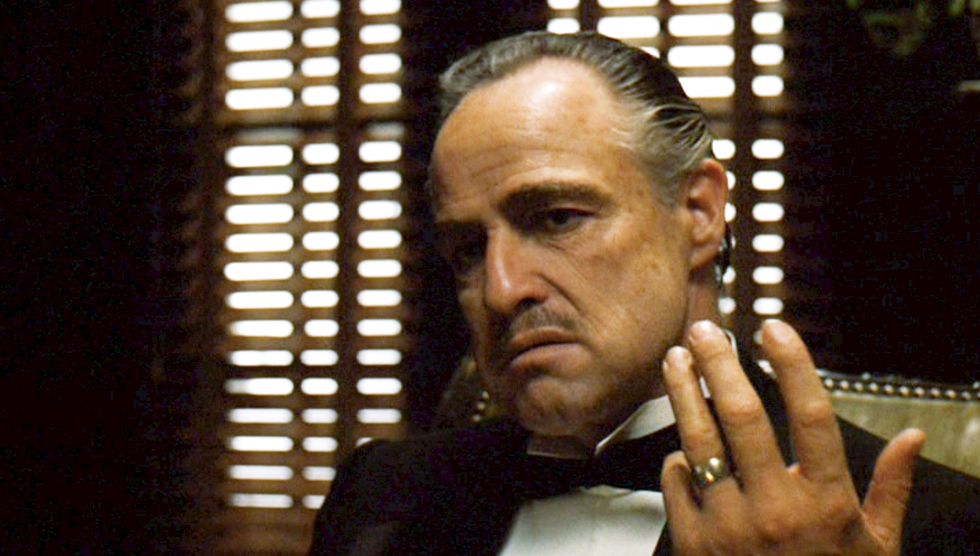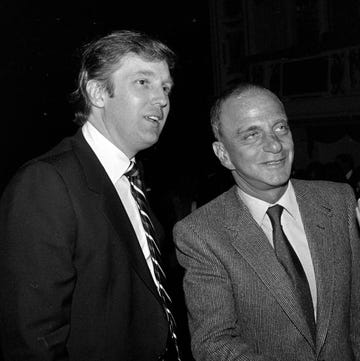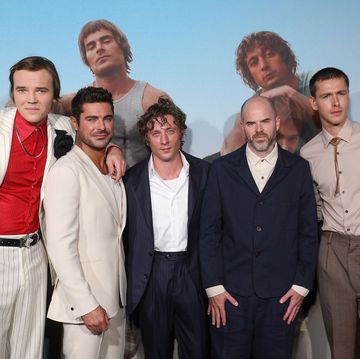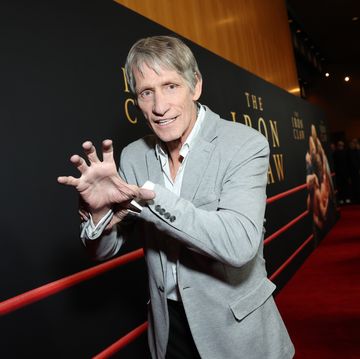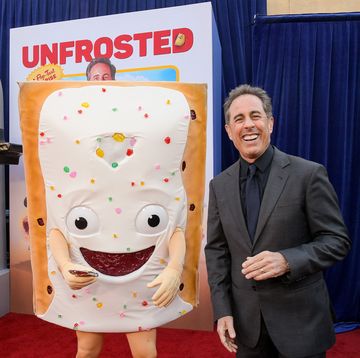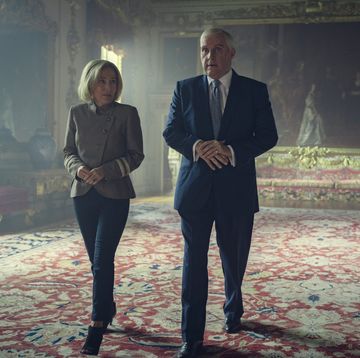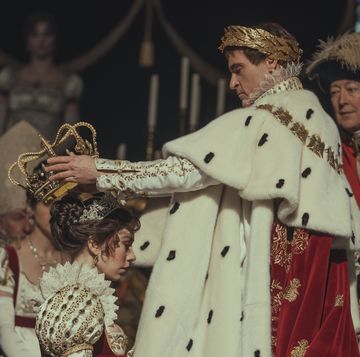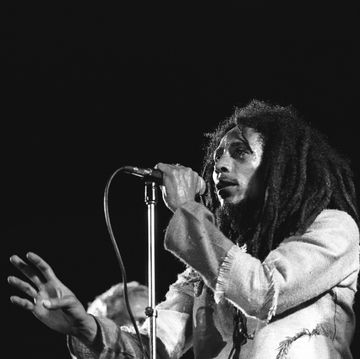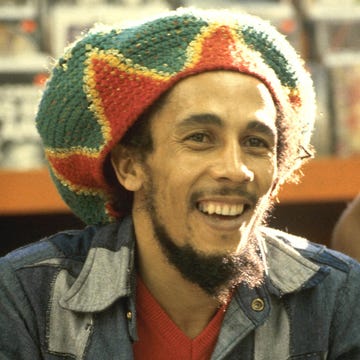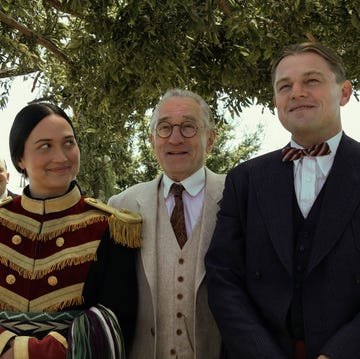It’s one of the most popular and critically acclaimed movie series in Hollywood history. But when The Godfather was in production, it was anything but a surefire hit. From casting squabbles to the producers’ real-life battle with organized crime bosses, here’s the story you may not know about The Godfather films.
Both Mario Puzo and Francis Ford Coppola came to the project due to money woes
Mario Puzo was a New York-born writer who had published several earlier books to little acclaim, even fewer sales, and had even worked under a pen name as a writer for pulp magazines. By the mid-1960s, he had a large family — and growing gambling debts. Eager to find a subject that he thought would appeal to the masses, he turned his attention to organized crime, which had become a hot-button topic thanks to a series of televised hearings in the U.S. Congress in the 1950s and '60s. In 1968, he sold the rights for his yet-to-be-published book to Paramount Pictures, who were shocked when it became a runaway bestseller in 1969.
That same year, filmmaker Francis Ford Coppola had co-founded his own independent movie studio, American Zoetrope, with friend and fellow director George Lucas. The new company was struggling, and although Coppola initially turned down Paramount when they approached him to direct the film (he couldn’t even finish the book the first time he tried to read it), Lucas and others convinced him to take the job to secure much-needed funds for Zoetrope.
READ MORE: The True Stories Behind The Godfather
The first film almost looked very different
One of Coppola’s first battles with Paramount was over the film’s setting and budget. Eager to save money, the studio had pushed Puzo to write a draft that updated the action to the 1970s. When Coppola came onboard, he insisted that it remain true to the 1940s world Puzo had originally envisioned. He also refused their suggestion that they save money by shooting outside of New York City (Kansas City was one suggestion), but Coppola once again held firm.
Coppola later said that he was nearly fired several times during the shoot and was convinced that he was saved by winning an Oscar during filming (a Best Original Screenplay Award for Patton). Exasperated with several crew members who he believed were unsupportive of his vision for the film, Coppola fired them, including an editor who was angling for Coppola’s job. One person that Coppola protected? Cinematographer Gordon Willis, whose iconic use of shadows and darkness infuriated Paramount bosses but gave the film its iconic look and feel.
The studio balked at Coppola’s casting choice for Vito Corleone
Although Marlon Brando is considered one of the most respected actors of the 20th century, by the early 1970s he’d earned a reputation for being difficult and unprofessional. So, it was perhaps no surprise that nobody at Paramount wanted to cast him as Vito Corleone. The studio wanted Coppola to consider actors Danny Thomas, Burt Lancaster, Ernest Borgnine, Anthony Quinn or others, but Coppola insisted that Brando was his only choice.
The studio made several stipulations that they believed Brando would refuse, including a low salary, putting up a bond to cover any financial costs due to delays and submitting to a screen test. Coppola tricked the mercurial actor by telling him he wanted to privately film him to work out some ideas for the film. Brando’s stunning on-camera physical transformation into Corleone (including shoving tissues in his lower cheeks) finally convinced Paramount to cast him.
Paramount was also unenthusiastic about casting Al Pacino as Michael Corleone
At the time of casting, Al Pacino was a young actor with New York stage experience but just one film credit. Early in the process, the studio had offered the role of Michael Corleone to Warren Beatty, Robert Redford and Jack Nicholson, who all passed. Others who auditioned for the role included Martin Sheen and Robert De Niro. De Niro also auditioned for the role of Sonny Corleone but was later cast as a young Vito in The Godfather II. James Caan, who would eventually play hotheaded older son Sonny, was initially cast as Michael, with another actor cast as Sonny. Producers eventually convinced Coppola to fire the other actor and give Caan the role, with Pacino as youngest son Michael.
Thanks to the real-life mob, the word 'mafia' never appears in the first film
In 1970, a group (led in part by crime family boss Joe Colombo Sr.) formed the Italian American Civil Rights League, aimed at eliminating offensive stereotypes and depictions in business and media. The group quickly set their sights on The Godfather, protesting the film from the moment it was announced. But Colombo allegedly took things even further. The shoot was threatened with costly labor shutdowns aimed at derailing production, engineered by the organized crime groups that controlled the unions. Producer Albert Ruddy’s car windows were blown out, and Paramount chief exec Robert Evans claimed to have received phone calls threatening him and his family, including then-wife Ali MacGraw.
In February 1971, just before filming began, Ruddy sat down with Anthony Colombo, one of Joe Sr’s sons, and hashed out a compromise. The League agreed to give its approval if the producers allowed the League to review the script (and remove the words “mafia” or “La Cosa Nostra”) and donate the proceeds of the New York premiere to the League. Ruddy’s public deal infuriated Paramount, who threatened to fire him, but it ended the boycotts and threats.
READ MORE: The Five Crime Families of New York City: Inside the Rise and Fall of the Mafia
Frank Sinatra attacked the first film
One of the most enduring legends surrounding the film is that the character of singer-turned-actor Johnny Fontane, who gets a vital career boost thanks to his relationship with the Corleone family, was based on Frank Sinatra. Sinatra reportedly believed it himself, going so far as to threaten Puzo when the writer tried to introduce himself at a Los Angeles restaurant shortly before the movie was filmed. But singer Al Martino, who played Fontaine in the first and third films, claimed that Fontane’s story more closely represented his own mob-assisted career, telling Vanity Fair that he’d used his mafia connections to convince Coppola to cast him. Coppola’s first choice, Vic Damone, had backed out — reportedly at the urging of Sinatra and others.
But Sinatra’s legendary temper must have cooled somewhat over the years. According to a 1989 letter from Coppola to Puzo during casting for the final film, Sinatra was offered the role of Don Altobello, an aging mobster and ally of Michael. Sinatra was interested but eventually declined due to the shooting schedule and low salary offer. He was replaced by Eli Wallach. Ironically, decades earlier Sinatra had replaced Wallach in From Here to Eternity, the film that won him an Oscar and later launched conspiracy theories regarding the mob’s role in his getting the part.
Several of the first film’s most iconic moments were improvised or unscripted
In the first moments of the trilogy, Brando’s Vito is seen holding a cat as he talks business with undertaker Amerigo Bonasera. The cat was a stray that Coppola had seen wandering around the studio, and he impulsively grabbed it before shooting the scene and handed it to Brando. The famed actor and the feline quickly bonded, but the cat’s purrs nearly ruined the audio mix for the scene.
One of the most famous lines in the film was improvised. Actor Richard Castellano (portraying Corleone underboss, Clemenza) was originally supposed to say, “take the gun,” but adlibbed to add the line, “take the cannoli,” reportedly at the suggestion of his actress wife, who also played his on-screen spouse.
Coppola called in Lucas for help
Coppola was part of a new wave of young directors who were taking Hollywood by storm in the early 1970s, including Steven Spielberg, Martin Scorsese and Lucas. Lucas worked as an assistant on the first Godfather film, assembling a number of sequences, including the montage of the intra-family mob “war” that breaks out following Michael’s killing of Solozzo and McCluskey. He also gave Coppola advice about how to edit a series of earlier scenes where Michael visits his father in the hospital to heighten the dramatic tension. Two years later, Lucas’ film American Graffiti made him a Hollywood power player in his own right, and he cemented his legendary status with the release of the first Star Wars film in 1977.
READ MORE: The Car Wreck That Changed George Lucas' Life and Led Him to Star Wars
For Coppola, the trilogy was a family affair
Six members of Coppola’s own closely-knit Italian American family appeared in the first film. His sister, Talia Shire, played Corleone sister, Connie. Although it was one of Shire’s first acting roles, she was nominated for an Oscar. His mother, Italia, played an extra in the fateful restaurant scene were Michael kills Solozzo and McCluskey. His father Carmine, a Julliard-trained musician, composer and conductor, composed some of the music for the films. Both Carmine and Italia would make additional cameo appearances throughout the trilogy.
Both of Coppola’s sons made several on-screen appearances, as did his daughter, Sofia. As a newborn, she played Connie’s son in the baptism scene in Godfather I, was an extra in Godfather II and then Michael’s daughter, Mary, in the final film. She had little acting experience and took on the role after Winona Ryder dropped out shortly before filming began. Her performance was widely panned, but she remained in the family business, becoming an award-winning screenwriter and director.
Coppola continued to tinker with the films after their release
In 1977, he agreed to produce a version of the first two films for broadcast television, in part to raise money for his troubled Vietnam War epic Apocalypse Now, which was dangerously overbudget. The Godfather Saga depicted the events in chronological order, beginning with Vito’s youth in Sicily and ending with the final events of Godfather II in 1959. To abide by television censors, this version eliminated some of the film’s violence, but included scenes previously deleted from the theatrical versions. Similar extended versions were released on home video and cable.
In 2020, Coppola revisited the final film in the trilogy, 30 years after its release. He’d long been unhappy with how the studio had rushed the film into production, pushing him to start filming before he and Puzo felt the script was ready in order to meet a Christmas release. As he did with several other of his films, including Apocalypse Now and The Cotton Club he re-edited a more definitive director’s cut, with an alternate beginning and ending, which he titled The Godfather, Coda: The Death of Michael Corleone.

